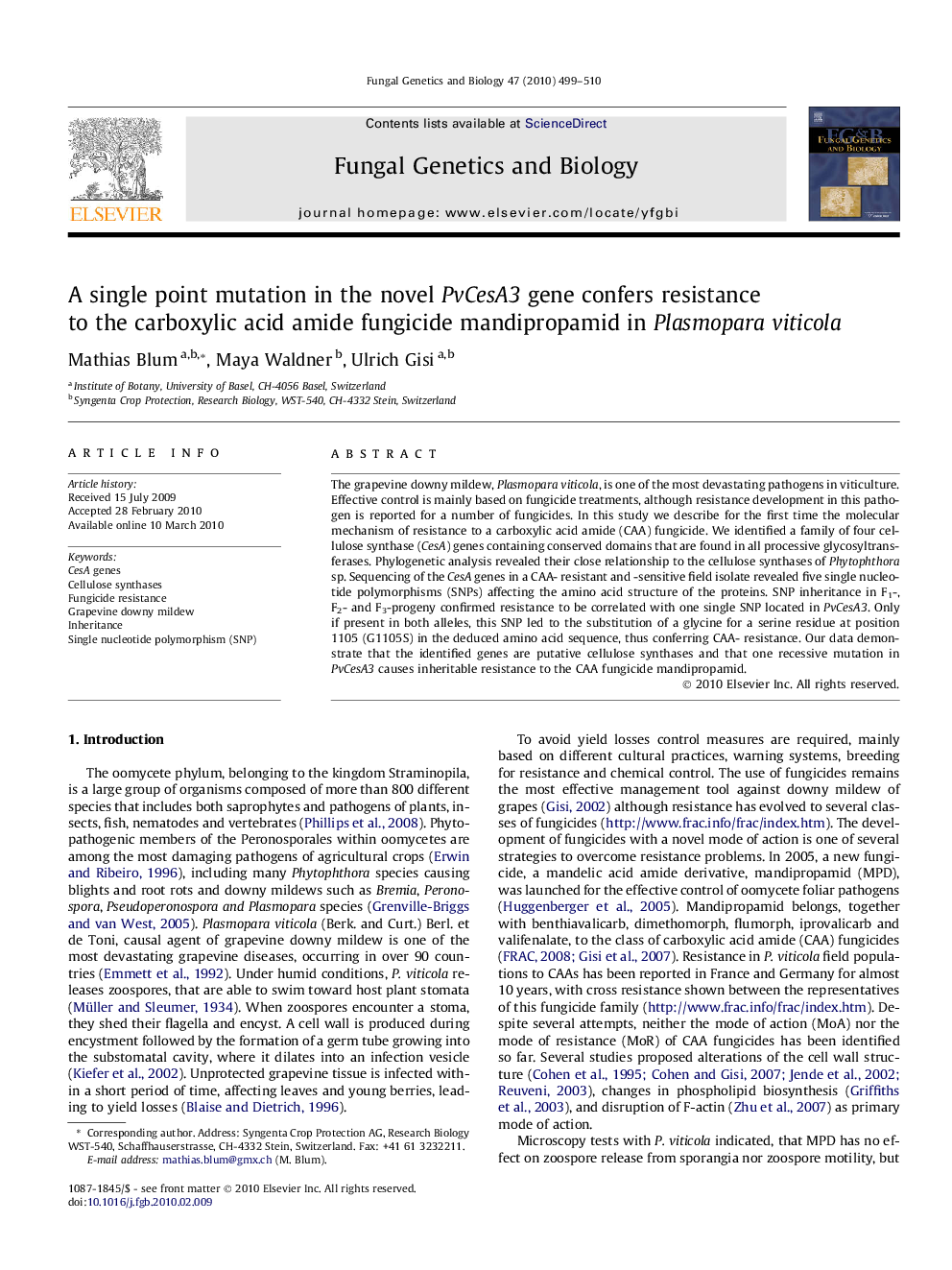| کد مقاله | کد نشریه | سال انتشار | مقاله انگلیسی | نسخه تمام متن |
|---|---|---|---|---|
| 2181081 | 1095265 | 2010 | 12 صفحه PDF | دانلود رایگان |

The grapevine downy mildew, Plasmopara viticola, is one of the most devastating pathogens in viticulture. Effective control is mainly based on fungicide treatments, although resistance development in this pathogen is reported for a number of fungicides. In this study we describe for the first time the molecular mechanism of resistance to a carboxylic acid amide (CAA) fungicide. We identified a family of four cellulose synthase (CesA) genes containing conserved domains that are found in all processive glycosyltransferases. Phylogenetic analysis revealed their close relationship to the cellulose synthases of Phytophthora sp. Sequencing of the CesA genes in a CAA- resistant and -sensitive field isolate revealed five single nucleotide polymorphisms (SNPs) affecting the amino acid structure of the proteins. SNP inheritance in F1-, F2- and F3-progeny confirmed resistance to be correlated with one single SNP located in PvCesA3. Only if present in both alleles, this SNP led to the substitution of a glycine for a serine residue at position 1105 (G1105S) in the deduced amino acid sequence, thus conferring CAA- resistance. Our data demonstrate that the identified genes are putative cellulose synthases and that one recessive mutation in PvCesA3 causes inheritable resistance to the CAA fungicide mandipropamid.
Journal: Fungal Genetics and Biology - Volume 47, Issue 6, June 2010, Pages 499–510